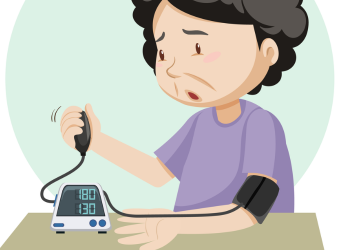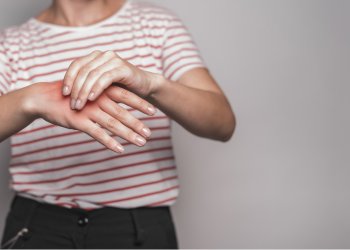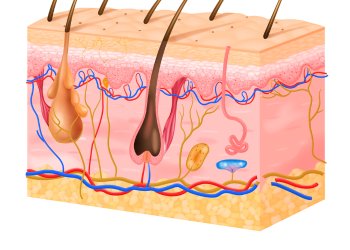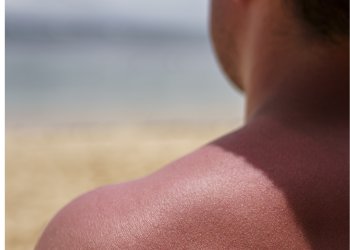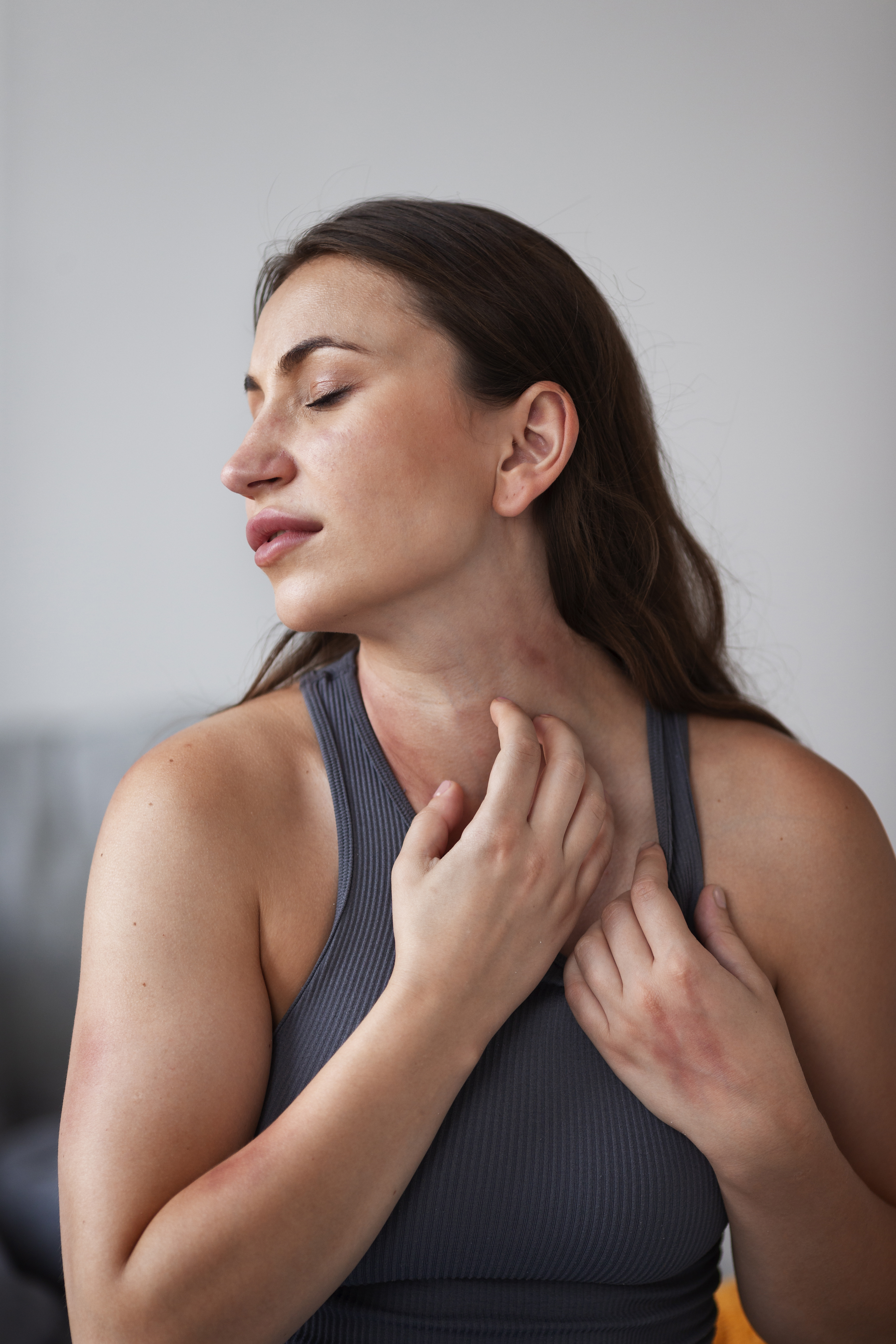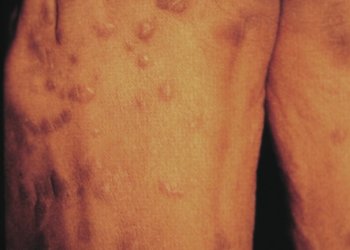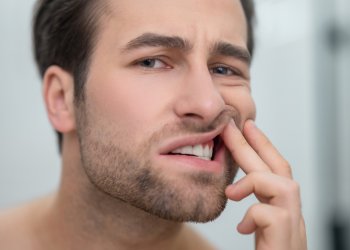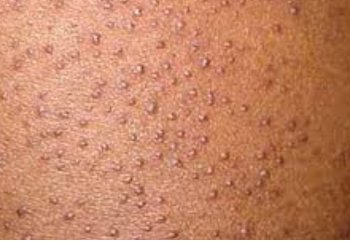
Keratosis
pilaris is a common condition where small bumps develop on your skin,
especially your arms, legs or butt. Excess keratin in your skin causes bumps to
form. This condition is harmless and typically doesn’t need treatment, and
usually fades by age 30. Treating dry skin with a gentle skin care routine can
help.
Keratosis pilaris are painless bumps
on your skin around your hair follicles. Keratosis pilaris, also called chicken
skin or strawberry skin, looks like goose bumps.
The common terms like chicken skin and
strawberry skin are not different physical things; rather, they are common
nicknames for the same skin condition, keratosis pilaris (KP), which
results in rough, bumpy skin from clogged hair follicles. The name
"chicken skin" comes from the appearance of the skin resembling the
skin of a plucked chicken, while "strawberry skin" (or
"strawberry legs") refers to the small, dark, and sometimes red dots
that can look like the seeds of a strawberry.
If you have this condition, it
looks like small, painless bumps on your skin around hair follicles. The bumps
consist of excess keratin, which is a protein that helps form your hair, nails
and skin’s outer layer. Keratosis pilaris bumps may look red, brown or white,
or they may look the same color as your skin.
Keratosis pilaris typically
appears on your upper arms, but it can also appear on any other part of your
body that has hair follicles
Keratosis pilaris is typically
more common in babies, toddlers, children, and teenagers, and it often worsens
around puberty.
Medical researchers believe
that certain genetic traits may cause it because it can run in families
You’re also more likely to
have keratosis pilaris if you have:
Fair or light
skin.
Certain skin
conditions, like eczema or ichthyosis vulgaris.
Keratosis pilaris is so common
that many dermatologists consider it a skin type instead of a medical
condition. About 50% to 80% of teenagers and 40% of adults will develop these
bumps at some point during their lives
Keratosis pilaris doesn’t
hurt, but it may make you feel self-conscious or insecure about your
appearance.
Symptoms
and Causes
The main feature of keratosis
pilaris that you’ll notice is patches of tiny, rough, discolored bumps on your
skin that resemble the dotted skin of a strawberry. You may get
Itchy or dry skin,
especially on the backs of your upper arms, legs, or buttocks.
Irritation of the
bumps causes them to become more discolored and noticeable. This is frictional
lichenoid dermatitis.
Rough,
sandpaper-like skin where the bumps appear.
Worsening of the
bumps when the air is drier, like in the winter months.
Other conditions can sometimes
cause these symptoms, such as itchy, dry skin. Eczema, psoriasis, allergies, and fungal infections cause similar symptoms.
Causes of
keratosis
The bumps you see when you
have keratosis pilaris are actually collections of the protein keratin. Keratosis pilaris bumps happen when keratin
clogs your pores instead of flaking off.
Eczema is a common chronic skin condition that
causes your skin to have discolored, itchy patches that come and go over time.
Keratosis pilaris may have a
link to vitamin A deficiency. Using moisturizers or creams with small amounts of vitamin A may help treat
keratosis pilaris.
Keratosis pilaris isn’t
contagious. Out of the many types of skin bumps and growths you may develop,
keratosis pilaris is a harmless one.
Diagnosis
Your healthcare provider will
typically diagnose keratosis pilaris with a simple physical examination of your
skin where you have bumps. Keratosis pilaris is easy to recognize, so medical
testing isn’t usually necessary.
Location
Keratosis pilaris bumps most
often show up on your arms, especially your upper arms. However, they can
appear wherever hair follicles are on your body, including your:
Face (cheeks, neck
or under your eyes).
Legs (thighs).
Back.
Chest.
Butt.
Forearms.
Characteristics
How your skin bumps look and
feel can reveal a lot about their cause. Keratosis pilaris bumps are:
Painless
Itchy or dry
Rough
Discolored
Management
and Treatment
Keratosis pilaris isn’t
harmful, so you usually don’t need to treat it. You may also notice that the
bumps go away in the summer and only become noticeable in the winter.
If the bumps bother you,
treatment with moisturizers, creams and gentle skin care may help
your symptoms.
Treatments can
include:
Over-the-counter
moisturizing lotions
Medicated
creams
Exfoliating
Use a loofah, washcloth or
exfoliating gel or scrub and small, circular motions to gently wash the
affected areas of your skin while you shower or bathe. Make sure not to scrub
too hard. Scrubbing can irritate your skin and make your symptoms worse.
Laser
treatments
Gentle
skin care
Most people find their
keratosis pilaris improves when they change their routine to avoid dry skin.
Changes can include:
Taking shorter
showers (15 minutes or less).
Using lukewarm
versus hot water in baths or showers.
Using a mild
exfoliating soap or body wash when you bathe.
Using a
humidifier, which can help hydrate your skin.
Using moisturizers
daily.
Home
remedies
Apple cider
vinegar: Apple cider vinegar contains malic acid, which is an alpha hydroxy
acid. Alpha hydroxy acids naturally exfoliate your skin. If you have sensitive
skin, apple cider vinegar can cause dryness and irritation, so it’s a good idea
to mix it with an equal amount of water. Apply a small amount of the mixture to
a cotton applicator and rub it on your affected areas.
Baking soda:
Baking soda is a natural exfoliant. Mix two teaspoons of baking soda with a
small amount of warm water to make a paste. Apply the paste to your affected
areas and gently rub it into your skin in small, circular motions for up to
five minutes. Rinse the paste off your skin when you’re finished.
Coconut oil: Many
people use virgin coconut oil as a moisturizer for their skin, but it also
contains anti-inflammatory and antibacterial properties that help reduce
discoloration and inflammation.
Water: Dry skin
can make keratosis pilaris worse. Drinking enough water and other fluids can
help keep your skin hydrated and minimize the appearance of keratosis pilaris.
HOMEOPATHY
Homeopathy can effectively
treat this condition with mild medications. It's noted that homeopathy cures
this without much discomfort
Medcines
Graphites
Thuja
Lachesis

